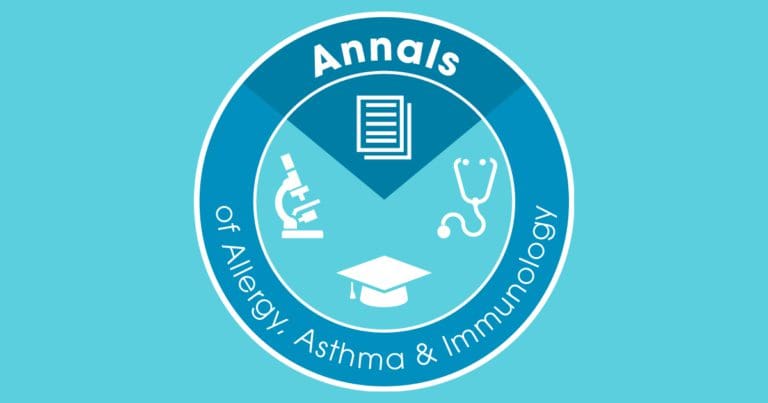As we move into the crisp, cool nights of fall, and the children are back in school, those pesky little respiratory viruses raise their ugly little heads. Yes, it is September – and this month, Annals of Allergy, Asthma & Immunology focuses on respiratory viruses and asthma.
A review in this issue evaluates the current state of the data connecting respiratory syncytial virus (RSV) with the development and exacerbation of asthma. Another review explores “the usual suspects” – rhinovirus (RV) and RSV – and how they have been shown to drive development and exacerbation of asthma. Lest you think that all asthma is due to RV and RSV, the CME review this month explores the other respiratory viruses that have been associated with asthma development and/or exacerbation. In fact, this month’s Marginal Zone chuckle brings you into the “Human Pathogen Award” ceremony to name the respiratory virus of the year. You’ll have to read the issue to find out which virus came out on top this year.
Do you know what the National Asthma Control Program (NACP) is and why it is important to asthma care in the United States? This month, there is an insightful editorial that explores what the NACP is and why you should be concerned about its continued success. Another editorial this month discusses vaccine hesitancy and what allergist-immunologists can do to counteract it. This is especially important as we go into the respiratory viral season, so that you know how to encourage your patients to get their seasonal influenza and SARS-CoV-2 vaccines.
Research articles this month cover a large array of topics. Asthma focused studies include those looking at triple versus dual inhaler therapy for asthma, and how language barriers affect pulmonary function and asthma control. There are studies looking at college students and the use of subcutaneous immunotherapy on campus, as well as how food allergy support and safety can be increased in the campus community. Other articles look at hereditary angioedema (HAE) through a large claims database, as well as outlining long term safety and efficacy in the treatment of HAE patients. There is even a study examining the differences in urinary mast cell mediators based upon sex.
Letters this month are equally interesting. There are studies looking at the relationship between eosinophil count and asthma exacerbations related to COVID-19, utilizing transcriptomics in asthma risk classification, and use of biologics in the treatment of sinusitis or polyps in various patient populations. Another study details the use of social media in allergy and immunology fellowship programs – for fellows-in-training, how does your program compare? And there are many more studies in this month’s Annals.
So, as the kids head back to school, be sure to make your assignment to read Annals every month cover to cover! Annals’ goal is to always provide the most up-to-date information so that you can provide the best possible care to your patients. As we ask every month, if you have any comments, please email Annals (annals@ACAAI.org) with any comments (good or bad) about articles and the utility of the journal.
Mitchell H. Grayson, MD, FACAAI
Editor-in-Chief



